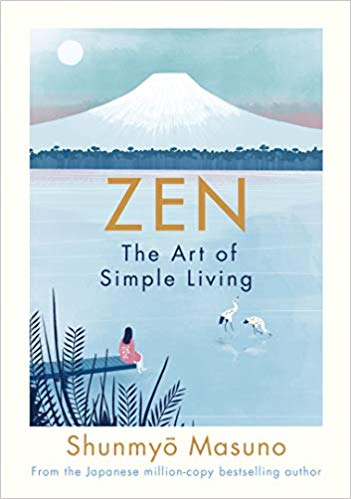Zen: The Art of Simple Living as a beautifully illustrated book for self-care
I only share books I know and love. If you buy through my links, I may earn a commission (learn more).
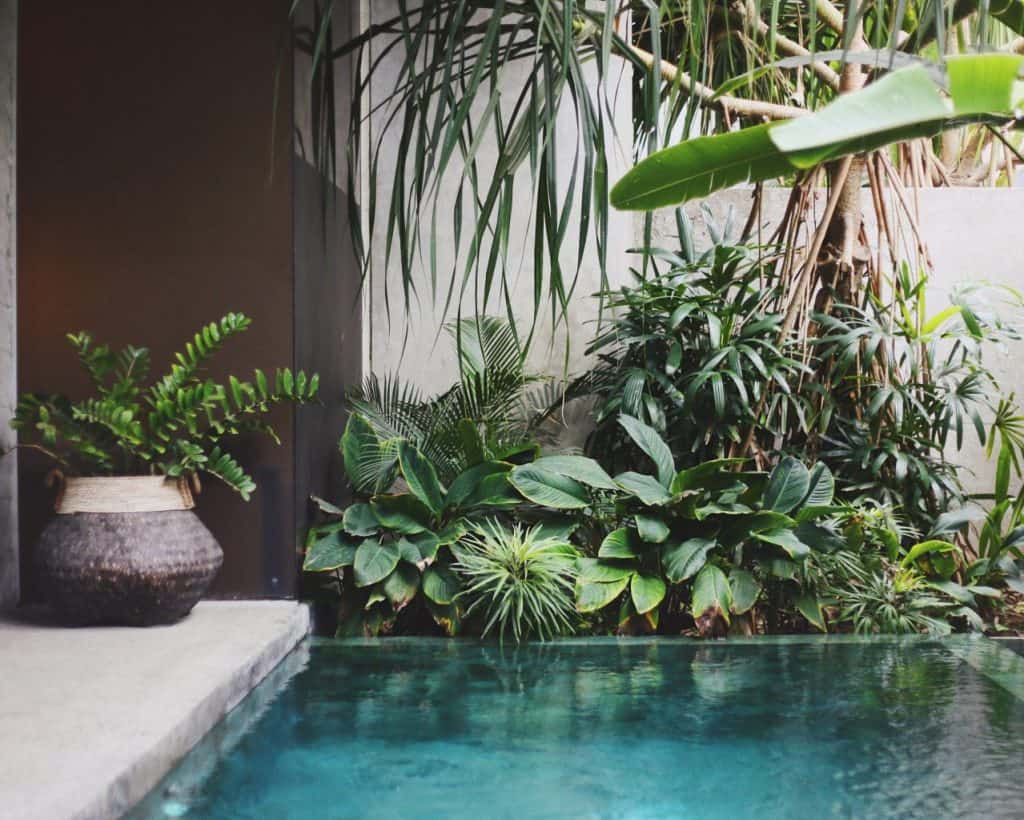
Peace, slowness, simplicity, joy, and zen… Japanese monk and garden designer Shunmyō Masuno shows us the art of simple living in his newly-translated book.
In Zen: The Art of Simple Living, Shunmyo Masuno draws on centuries of wisdom to apply the essence of Zen to modern life in clear, practical, easily adopted lessons–one a day for 100 days.
Like The Things You Can See Only When You Slow Down by Haemin Sunim – a book I’ve celebrated before on the blog – Zen: The Art of Simple Living is a delicately stunning little hardback that is just as loveable for its beautiful illustrations as its wise and gentle words.
“Zen is about habits, ideas and hints for living a happy life,” Shunmyō Masuno writes. “A treasure trove, if you will, of deep yet simple life wisdom.”
It’s a book to remind you how going outside to watch the sunset can make every day feel celebratory, spending time barefoot can strengthen your body, and lining up your shoes after you take them off can offer more than just tidiness.
Turn to a new page every day, read it in one go, or – my favourite option – flick through it when you’re in need of some simple living inspiration.
Just subtle shifts in your habits and perspective
That’s all you need to live simply
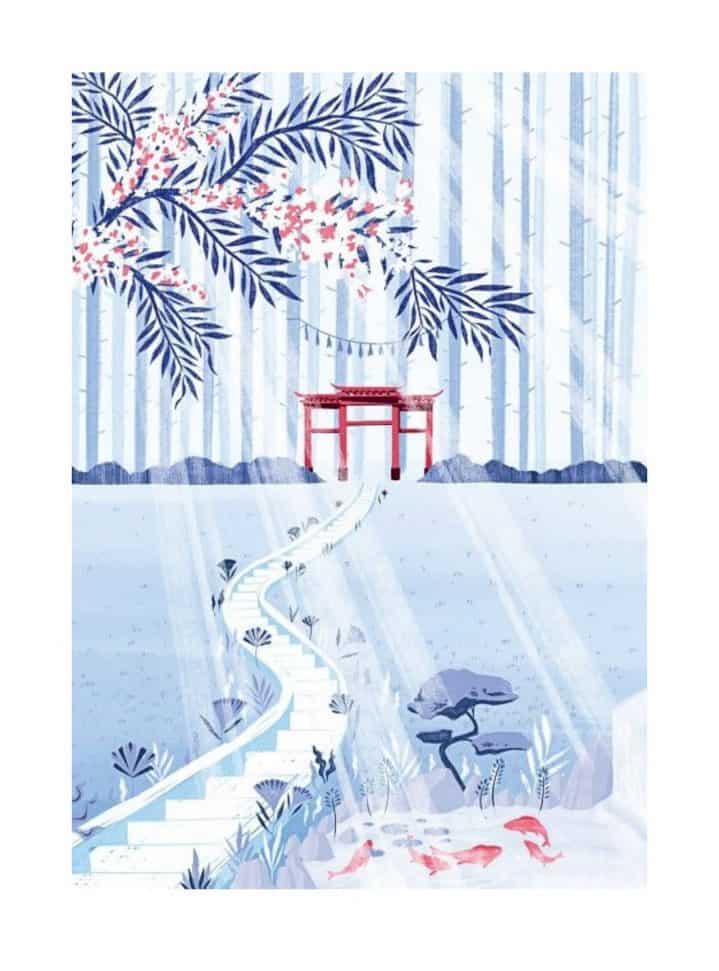
You don’t need to go to the ancient Japanese capitals of Kyoto or Nara; you don’t need to climb Mount Fuji; and you don’t need to live near the ocean. With really only minor effort, it is possible to savour the extraordinary.
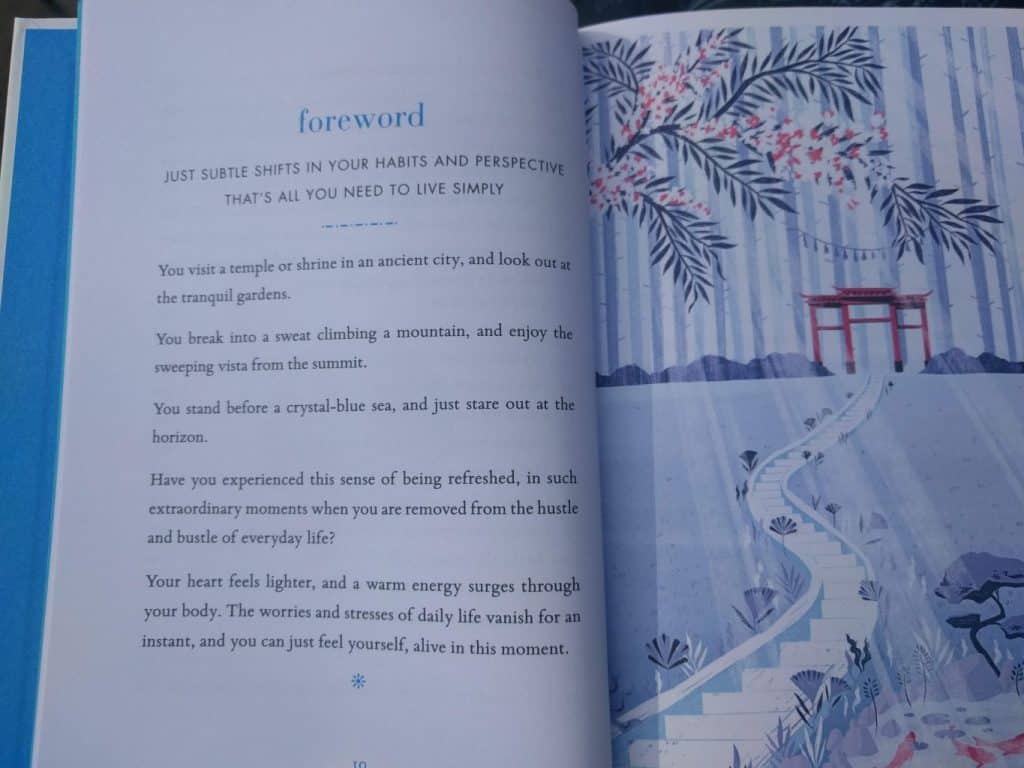
A renowned Zen Buddhist priest and gardener, Shunmyō Masuno’s unique background shines through in the book.
“I find that encountering a Zen garden can convey far more about Zen concepts than reading any number of texts explaining the philosophy,” he writes as the book begins.
As an accompaniment to reading Zen: The Art of Simple Living, set aside a few minutes to gaze at some of Shunmyō Masuno’s zen garden designs.
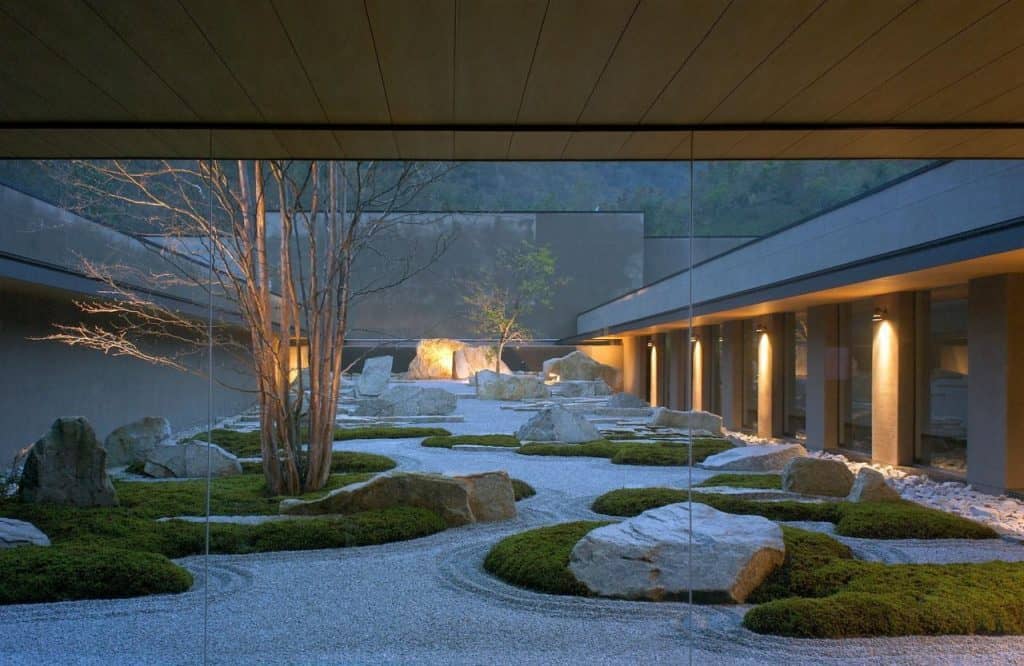
Shunmyō Masuno realises that some Zen ideals aren’t all that accessible to the non-monks among us. The Art of Simple Living forges an uncomplicated path around this – such as with “mountain dwelling,” a lifestyle idealized by many Japanese people.
“It is considered the most beautiful way to live, and is sometimes referred to as life sequestered from the world,” writes Shunmyō Masuno. It may seem like a distant daydream, but we can adopt many elements of “mountain dwelling” quite simply:
Reading while listening to the sounds of birds and the rush of water. Enjoying a drink of sake while gazing at the moon’s reflection in your glass. Communing with wildlife. The ability to live with a free mind, accepting things for what they are.
“Consider putting into practice the concept of ‘seclusion in the city’“, adds Shunmyō Masuno. “A place where you can disconnect from other people and spend time by yourself. A place in nature where you can regain mental freedom. A few moments of seclusion can illuminate the path forward.”
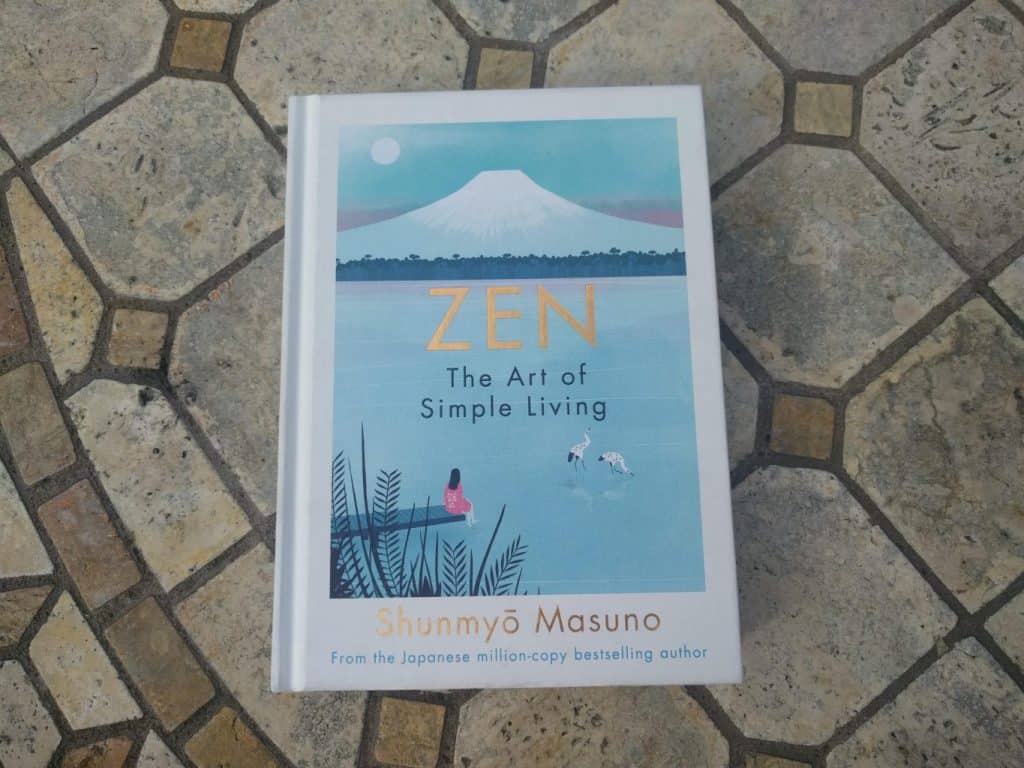
Shunmyō Masuno’s other advice is similarly easy to apply to our own lives. The first lesson in the book: make time for emptiness. “Making time for not thinking about anything – that is the first step towards creating a simple life.”
Lesson 2: wake up fifteen minutes earlier. “Are we really so busy? Aren’t we the ones who are pushing ourselves to hurry?” responds Shunmyō Masuno to the common reason against leisurely early mornings. It’s when we’re most stressed and overscheduled that time for ourselves really counts:
Especially when things are hectic, try waking up fifteen minutes earlier than usual. Lengthen your spine, and take slow breaths from the point below your navel – the spot we refer to as the tanden. Once your breathing is in order, your mind will naturally settle into stillness as well.
Then, while you enjoy a cup of tea or coffee, look out the window at the sky. Try to listen for the warbling of little birds.
How peculiar – just like that, you create space in your mind.
When eating, pause after every bite (lesson 11). “There is a direct link between mind and body. When you hone your mind, your renewed vitality naturally shows in the body as well.” “Food is what creates both your body and your mind.”
Some favourite lessons for simple living from Shunmyō Masuno
- 8. Put pen to paper with care
- 13. Seek out your favourite words
- 14. Pare down your belongings
- 15. Arrange your room simply
- 17. Exhale deeply
- 20. Seek out the sunset
- 21. Don’t waste time worrying about things you can’t control
- 23. Breathe slowly
- 24. Don’t think of unpleasant things right before bed
- 25. Join your hands together
- 29. Don’t put off what you can do today
- 30. Try your best to do what you can now
- 31. Discover another you – find your inner protagonist
- 33. Take pleasure in your work – work is what brings out your inner protagonist
- 36. Simply immerse yourself – the tremendous power of being unfettered
- 47. Feel instead of think
- 49. Don’t let things go to waste
- 51. Don’t be bound by a single perspective
- 57. Appreciate your connection with things
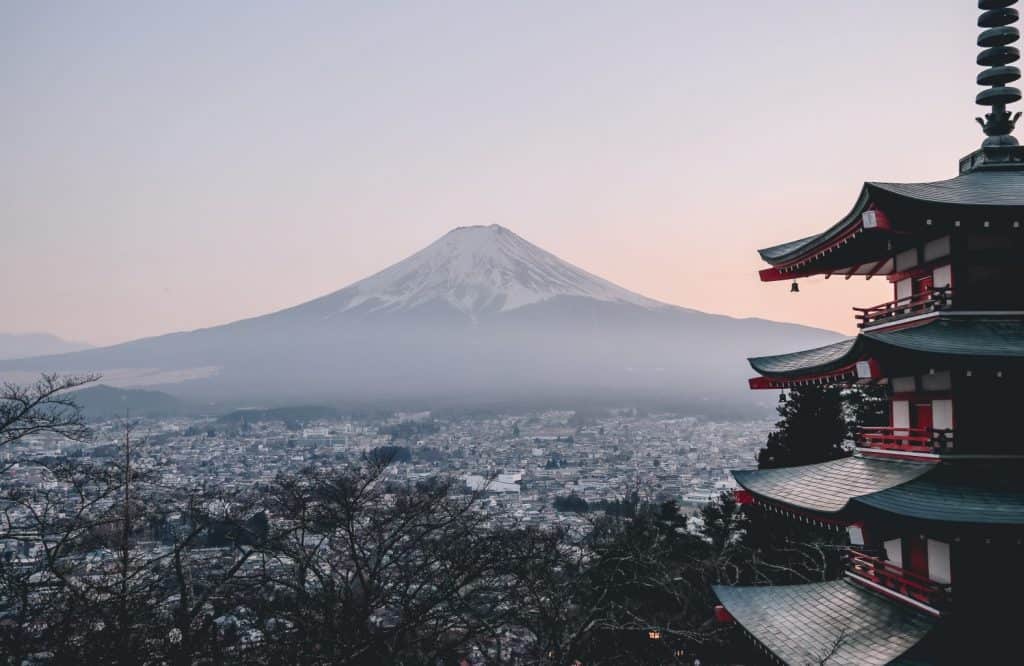
If the world is not going the way you want it to, perhaps it is better to change yourself. Then, whatever world you encounter, you can move through it comfortably and with ease.
Zen: The Art of Simple Living is a reminder of the simplicity and beauty of life. This doesn’t mean it will require any less effort – as Shunmyō Masuno writes, “Life requires time and effort. That is to say, when we eliminate time and effort, we eliminate life’s pleasures. Every so often, experience the flip side of convenience.”
With time, effort, and a gentle and conscious approach to each day, we can slow down and take better care of ourselves as we move through life. Zen: The Art of Simple Living is a wonderful guidebook to helping us do just this.
Zen: The Art of Simple Living is available now to pick up, curl up with, lose yourself in its illustrations, and – like all great books – come out slightly different on the other side.

